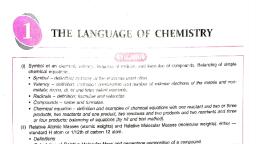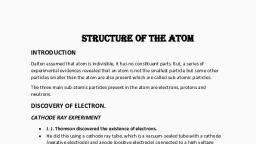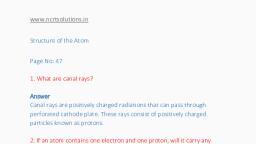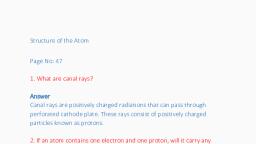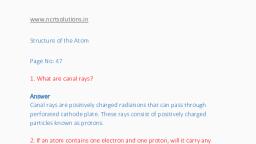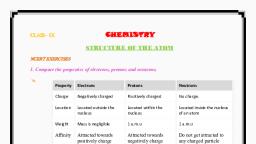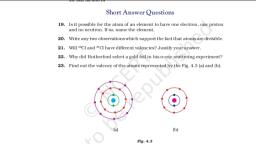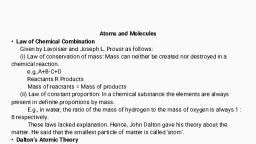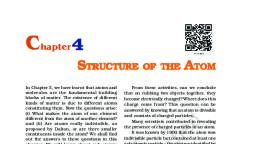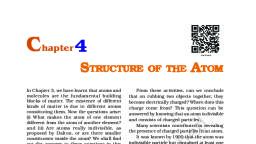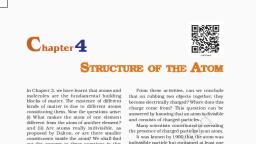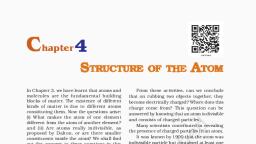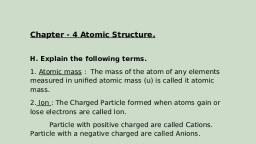Page 1 :
Valency , We have learnt arrangement of the electrons in an atom in different shells/ orbits., Let us consider a carbon atom. The atomic number of carbon atom is 6. It possesses 6 electrons, which surround its nucleus, as shown in the figure. , According to Bohr -Bury rule, there should be two electrons in the innermost shell (n=1)., The remaining four electrons occupy the outer most shell n=2. , The electrons present in the outermost shell of an atom are known as the valence electrons. Therefore, the number of electrons present in outermost orbit of an atom is called its valency. , Valency of an atom explains the combining capacity of the element with other elements in the above example the valency of carbon atom is 4.
Page 2 :
Let us consider some more examples, if you consider the atoms like hydrogen/ lithium/sodium, it contains one electron in its outermost shell. Therefore valency of hydrogen, lithium or sodium is one. , Can you tell, valences of magnesium and aluminium? , They are two and three, respectively, because magnesium has two electrons in its outermost shell and aluminium has three electrons in its outermost shell. , If the number of electrons in the outer shell of an atom is nearly close to its full capacity, then valency is determined in a different way. , For example, the fluorine atom contains 7 electrons in outermost shell, and its valency could be 7. But it is easier for fluorine to gain one electron than to lose seven electrons for obtaining 8 electrons in its outer most shell. , Hence, its valency is determined by subtracting seven electrons from eight and which gives a valency of '1', for fluorine. , State the valences of magnesium and sodium., Define valency by taking examples of nitrogen and boron.
Page 3 :
Valency of the first eighteen elements is given in the last column of Table 2.
Page 4 :
What is the importance of valency? , See electron distribution in helium in table. We will notice that the shell of helium has two electrons in outer most shell and the shell is filled to its full capacity. , Neon and Argon have 8 electrons in their outer most shells. These three gases are very stable and have low reactivity. , Scientists, studying the distribution of electrons in different shells concluded that the special arrangements of electrons in He, Ne and Ar make them stable or un reactive with other elements. , They do not react with other elements to form compounds. In other words we can say that these gases are chemically inactive and also known as inert or noble gases.
Page 5 :
Atoms of all the noble gases except those of helium have 8 electrons' in their outer most shell. Thus an atom with eight electrons or an octet in their outer most shell, is chemically stable, or does not combine with other atoms., An atom with two electrons in its outer most shell, also is more stable when there is only one shell present in it. An outermost-shell which has eight electrons is said to possess an octet. , Atoms of an element thus react with other atoms, so as to achieve an octet in their outermost shell. , From the above discussion, we can conclude that when an element reacts to form compounds their atoms must combine in such way that they can attain the stable electron distribution of noble gases., An atom can achieve an octet by two ways. 1) by transfer of electrons 2) by sharing of electrons. Both the processes result in the formation of bonds between atoms.





















